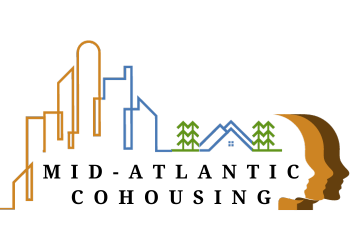Editor's Notes: The following are excerpts of an article written by Karen M. Wyatt, MD for The Huffington Post on June 23, 2015. The information in this article is one source for the presentations Janice Blanchard and Ann Zabaldo will make at the upcoming Aging in Community Collaboratory April 8-10, 2016, Makeover Montgomery 3 May 4-6 2016 and Aging Better Together May 20-21, 2016 Karen M. Wyatt, MD The Huffington Post, June 23,2015 1. Shortage of family caregivers. According to a study reported by AARP Public Policy Institute there will be a severe shortage of family caregivers as the Baby Boom generation ages and faces the end-of-life. While there are currently seven potential family caregivers for every patient, this ratio is expected to drop to 3:1 by 2050. Gabriel's House at Anam Cara is already helping with this issue by recruiting and training volunteers who can give relief to family caregivers as part of the care team. In this way the entire community can serve as a source of potential caregivers for future patients and decrease the need for family members to take on the entire burden of care. 2. Shortage of paid caregivers. In addition, a study published in the Health Affairs journal in June indicates that "at least 2.5 million more long-term care workers will be needed to look after older Americans by 2030." Along with other social model hospice homes, Gabriel's House is also offering certified training with continuing education credits for professional caregivers for the terminally ill. These training programs will increase the number of workers available to meet the long-term care needs of our society. 3. Need for family respite. The Institute of Medicine's 2014 report Dying in America points to a current need for respite and support for family caregivers to help avoid burnout and resulting emergency hospitalizations. Social model hospice homes can provide respite care as well as terminal care, allowing for much-needed rest for exhausted caregivers. 4. Need for home renovation for safety and mobility. The IOM report "Dying in America" also cites a lack of publicly-funded programs for retro-fitting homes for safety features and wheelchair accessibility. Social model hospice homes are already designed to meet safety and mobility standards and can eliminate the need for expensive renovations to family homes. 5. Cultural barriers to hospice care. In an interview for End-of-Life University, Dr. Donald Schumacher, the President and CEO of the National Hospice and Palliative Care Organization, stated that cultural barriers to hospice care must be addressed in the future. Some of these barriers include a lack of cultural diversity in hospice staffs, mistrust of the healthcare system, and worry about insurance coverage and cost of care. The community-based social model hospice home has the potential to overcome some of these barriers by utilizing volunteers and caregivers from the patient's own cultural group and neighborhood, by functioning largely outside the health care system, and by eliminating financial concerns through unique funding streams (see #6). 6. Reduction in Medicare payments for hospice and home care. The IOM report mentioned above indicates that hospice payments from Medicare will be reduced by 11.8 percent over the next decade, which will likely create financial stress for smaller hospices and lead to decreased access to care. Under the social model of care for the dying there is no federal or state funding because these homes do not function as medical facilities. In many states they are licensed under the Department of Social Services rather than the Department of Health. Social model hospice homes rely on foundations and grants, community fundraising, and contributions from individual donors for funding. They tend to be cost-effective organizations that provide care for free or at low-cost and on a sliding scale. While there are no perfect solutions to the issues facing end-of-life care in the U.S., the community-based social model seems to offer an important and viable addition to the current system of hospice care. This model encourages communities to take responsibility for the needs of their own citizens and provides an opportunity for creative involvement in end-of-life care for everyone. In addition, existing houses can be utilized for the social model care homes, eliminating construction costs for new facilities and reducing the barriers to starting such a project. The flexibility of this model and the lack of Medicare regulation allows for adaptation to the unique requirements of each community. ### What can YOU do? Download the flyer on the first ever AIC Collaboratory. Contact Ann Zabaldo, 202.546.4654 or email: [email protected] Attend the three sessions being presented by Janice and Ann at the upcoming Aging Better Together conference in Salt Lake City May, 20-21, 2016. Haven’t quite made up your mind to attend this conference? Make it easy. Attend. It will be transformational for you, your community whether forming or completed, for all of us everywhere who are seniors and those of us likely to become seniors cohousing or not. * Collaboratory: an inclusive learning environment where action learning and action research meet. Participants continue to acquire subject knowledge outside the collaboratory – both through experimental application and developing channels (such as online or blended learning). The collaboratory’s primary aim is to foster collective creativity to address complex issues. The Cohousing Toolbox When what you need are TOOLS to get on with it! For your weekend reading ... The Dicey Retirement Game The Changing Definition of a Full Life Brother, Sister, Roommate, Neighbor The Other 2016 Campaign: Reframing Aging EDITOR'S NOTE: We now publish only the main topic and supporting information from the weekly newsletter to this blog site. To get all the rest of the good stuff everyone else is reading you have to subscribe. Click on the large SUBSCRIBE TO THIS NEWSLETTER button. It's PAINLESS! It's FREE!
0 Comments
Your comment will be posted after it is approved.
Leave a Reply. |
Categories
All
AuthorAnn Zabaldo is a passionate promoter of cohousing. She was on the develoment team for Eastern Village in Silver Spring, MD and Takoma Village in Washington, DC where she lives. She serves on the Board for MAC. Archives
February 2017
See cool blog for Emerson Commons.
Image Credit:
Nathan Dumlao |
|
Website by Erin McMichael
© COPYRIGHT 2023. ALL RIGHTS RESERVED MID-ATLANTIC COHOUSING |
ResourcesProgramsBlogCommunities |
DonateMembershipAboutContact Us |
|
SUBSCRIBE |



 RSS Feed
RSS Feed